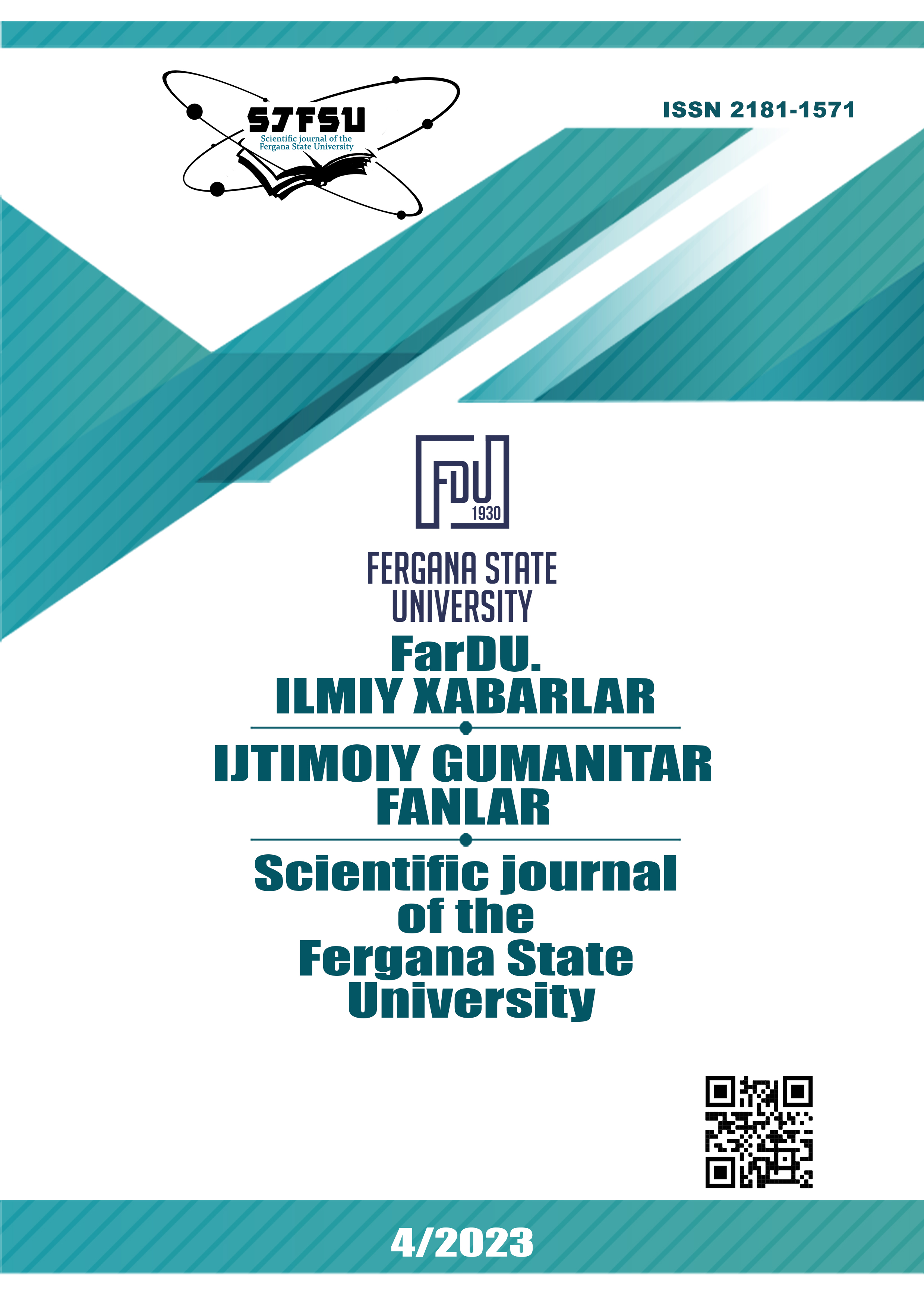ISLAMIC-TENGRIAN SYMBOLISM AND THE SACRED FUNCTIONS OF THE TUGS ON THE EXAMPLE OF BURNINGS IN MEDIEVAL UZBEKISTAN
Keywords:
symbol, ziyarat, tug – pole at the graves, Sufism, shamanism, horse cult among the Turkic peoples, tree of life, toyelgi rite.Abstract
This article discusses the practice of venerating graves and mausoleums, which have become special places of worship for Muslims in Uzbekistan. The authors also cite historical evidence of the presence of tugs with horse tails on the graves of spiritual leaders and explain their symbolic meaning. The research conducted in this area is described, as well as the points of view of various authors on the historical and functional significance of these tugs are presented.
References
Charfi A., Namatov N.A., Turaev B.O. The rise of islam //International Journal of Intellectual Cultural Heritage. – 2022. – Т. 2. – №. 2. – С. 121-132.
Turaev B.O., Namatov N.A., Namatov M.A. Islamic achievements in science //International Journal of Intellectual Cultural Heritage. – 2022. – Т. 2. – №. 2. – С. 25-35.
Samatov X.U. Naqshbandiya tariqatida xalq bilan muloqot qilishning tasavvufiy-falsafiy asoslari //Ilmiy axborotnoma. – С. 69.
Тураев Б.О. Махдуми Аъзам-мутафаккир //Самарқанд: ИБХМ нашриёти. – 2013.
Moser, Henri „Durch Central-Asien“, Leipzig, 1888.
Терлецкий Н.С., Некоторые древние атрибуты мусульманских мест паломничества и поклонения (к вопросу о функциях и символизме туга. http://kunstkamera.ru/files/lib/978-5-884314-159-6/978-5-884314-159-6_05.pdf (доступ - 12.05.2020)
Салоҳиддин Муҳиддин, «Исломда ўлим ва жаноза масалалари». Тошкент, Мовароуннаҳр, 2000
https://qomus.info/encyclopedia/cat-t/tug-uz/ (доступ 04.05.2020)
Дмитриев С.В. Знамя в военно-политической культуре тюрко-монгольских кочевников. Журнал социологии и социальной антропологии. 2001. Том IV. № 4.
http://hirr.hartsem.edu/ency/Syncretism.htm (доступ 03.05.2020)
http://kunstkamera.ru/files/lib/978-5-884314-159-6/978-5-884314-159-6_05.pdf (доступ - 12.05.2020)
Снесарев Г. П. Реликты до мусульманских верований и обрядов у узбеков Хорезма. Москва, 1969
Нестеров С.П. Конь в культах тюркоязычных племен Центральной Азии в эпоху средневековья. Новосибирск, 1990
Сухарева О.А. Ислам в Узбекистане. Ташкент, 1960
Безертинов Р.Н. Тенгрианство – религия тюрков и монголов. Казань, 2004
Хакимов А., Файзиева В., "Ўзбекистон Давлат Санъат Музейи ноёб хазинасидан". Ташкент, 2014
Шайх Муҳаммад Содиқ Муҳаммад Юсуф, «Сунний ақийдалар». Тошкент, Шарқ. 2011
Сафаров А. И., Ризаев И. И. Роль исторического сознания и исторической памяти в системе национального сознания //Культурное наследие и народное искусство: сохранение и актуализация в целях устойчивого развития общества. – 2022. – С. 297-303.
Усмонов Ф. Н. Основные этапы развития научной рациональности //Theoretical & Applied Science. – 2017. – №. 11. – С. 181-184.
Mardonov R. The role of social and humanitarian disciplines in the professional development of students //Conferencea. – 2021. – С. 17-21.
Downloads
Published
Issue
Section
License
Copyright (c) 2023 Scientific journal of the Fergana State University

This work is licensed under a Creative Commons Attribution-NonCommercial-NoDerivatives 4.0 International License.

